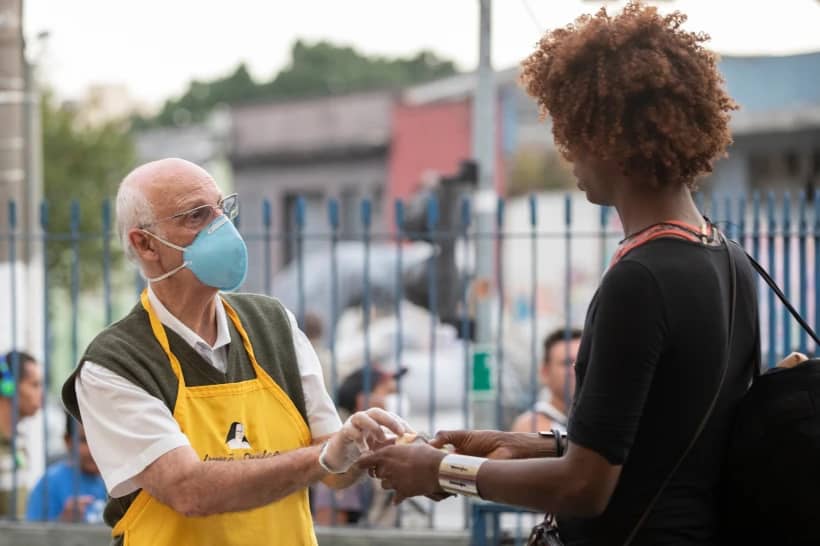ROME – On Tuesday a panel of experts presented a new compendium of abuse cases across Latin America, a region containing the highest percentage of the world’s Catholics, offering an analysis of some of the most prominent cases to garner global attention in recent decades.
Titled, “Abuse in the Latin American Church: An Evolving Crisis at the Core of Catholicism,” the volume was released in April and includes contributions from prominent experts across various fields who evaluate the nature of abuse in Latin America given its social and cultural context, as well as insights into paths of justice and healing for victims.
The book was authored by Latin American theologians Dr. Véronique Lecaros and Dr. Ana Lourdes Suárez.
Lecaros is a professor of theology at the Pontifical Catholic University of Peru and since 2021 has led the Archdiocese of Lima’s Listening Commission for victims of abuse in ecclesial surroundings. Suárez is a professor of Social Theory at the Catholic University in Argentina.
Among the most notable contributors for the book is German Jesuit Father Hans Zollner, a former member of the Pontifical Commission for the Protection of Minors (PCPM) and director of Rome’s Institute of Anthropology: Interdisciplinary Studies on Human Dignity and Care.
Others include Dr. Rocío Figueroa, a professor of Systematic Theology at Catholic Theological College in Auckland and a former member of the women’s branch of the Peru-based Sodalitium Christianae Vitae, currently under Vatican investigation, and Dr. David Tombs, a professor of Theology and Public Issues at the University of Otago, as well as several other experts from throughout Latin America.
The book is divided into four parts, with the first exploring abuse in specific Latin American contexts, including Argentina, Brazil, Chile, Peru, Ecuador, Bolivia, Mexico and Uruguay.
The second part explores discussions that have arisen as a result of the clerical abuse crisis in Latin America, while the third part looks at abuse within organizations of the Catholic Church in Latin America. The fourth part explores the impact of abuse and ways to restore victims while seeking justice for abusers, stressing the need for truth, reconciliation and justice commissions in Latin America.
Lecaros, Suárez and Figueroa spoke at a virtual May 28 presentation of the book, which was attended by Zollner, and which also featured Bishop Luis Manuel Alí Herrera, secretary of the PCPM, as a panelist.
Tuesday’s presentation, done via Zoom, was organized jointly by the Pontifical Catholic University of Perú, Rome’s Pontifical Gregorian University, and the Pontifical Catholic University of Chile, among others.
Speakers acknowledged that throughout Latin America, the Catholic Church continues to hold a prominent and influential position, and it remains one of the most respected institutions, largely due to its social initiatives, which often fill the gaps left by “state inadequacies” in places that are impoverished and underdeveloped through a vast ecclesial network.
In this context, priests are often seen as holding an exalted status, with Lecaros saying clericalism is “one of the main causes of abuse” in Latin America due to the power clergy tend to hold, as well as enduring machismo attitudes and perceptions that they are God’s representatives.
“It also depends on the laity to put limits” to the power that clergy enjoy, Lecaros said, saying, “when an abuse of power is combined with a sense of impunity,” the door to sexual abuse is flung open.
Similarly, Suárez offered an overview of the structure of the book, and pointed to prominent abuse cases that have arisen in Latin America in recent decades that are covered in the volume.
These cases include scandals surrounding the late Father Marciel Maciel Degollado and the Legionaries of Christ in Mexico; former priest Fernando Karadima in Chile; layman Luis Fernando Figari and the Sodalitium Christianae Vitae (SCV) in Peru, as well as Father João Scognamiglio Clá Dias and his group “Heralds of the Gospel” in Brazil.
Each of these abusers founded groups with an elitist membership distinguished by class and racial exclusion, gaining prominence through social initiatives that secured financial backing from influential actors, while imposing an authoritarian and militant form of governance on members.
Suárez noted that while other countries have made progress in conducting national inquiries into clerical abuse and publishing sweeping reports in recent years, Latin America has been “very slow,” with the exception of Chile, where massive scandals in 2018 prompted the entire episcopal conference to tender their resignations to the pope.
By exploring specific cases and analyzing discussions that have arisen about the abuse crisis as a result, Suárez said the book can help “to understand the problem” better and identify best-practices going forward.
She said she hopes the book will help create awareness and inspire victims to come forward, because “it is impossible to know” the reality in full “without the victims of abuse who little by little cease being silent.”
“In future, we want this book to impel many victims who were silenced, who haven’t spoken, to trust because they have the right to speak and seek justice and reparation,” she said.
Speaking specifically of the abuse crisis in Chile, Dr. Eduardo Valenzuela, a professor at the Pontifical Catholic University of Chile’s Faculty of Sciences, reflected on the impact of the scandals surrounding Karadima and missteps from church hierarchy on this and other cases on Chilean society.
Among other things, he said, the scandals were a shock that caused a massive “loss of trust in religious institutions,” due not only to the abuses, but the church’s mishandling of them.
While punitive measures have been taken against some priests, little has been done for the reparation of victims, he said, noting that many young people, in particular, have disaffiliated with the church and have followed a broader cultural trend of losing faith and trust in institutions.
Young people “didn’t stop believing, they stopped feeling like they belonged,” he said, calling this “a crisis of belonging that still affects our church.”
Figueroa in her remarks noted that only recently has abuse been understood as a crime in the church, rather than a sin, and that in most Latin American contexts, support for addressing scandals has not come from the church itself or government inquiries, but from the civil population itself.
Speaking out against the church in Latin America can often be difficult because of “the alliance between religious communities and political institutions…they have had and still have strong ties and protect one another.”
Figueroa also lamented that there are many bishops, clergy, religious and laity in Latin America who still don’t want to talk about the abuse issue and stressed the importance of allowing victims to be heard.
She also underlined the need to address the broader dynamic of the abuse of power and conscience in the church and its ties to sexual abuse, specifically in the abuse of women religious, who often have “no power” in the church and are subject to the authority of a patriarchal system.
While the church has made significant strides in handling the sexual abuse of minors in recent decades, “not as much has been done on the abuse of young people and women,” she said, saying the power deferential between them and clergy in the church “makes it impossible to feel free.”
Only recently has the abuse of women religious become a point of discussion, she said, noting that cases such as that of notorious alleged abuse Father Marko Rupnik, who is currently the subject of a canonical investigation after being accused of abusing roughly 30 adult women, most of whom are nuns, have helped shed light on the problem.
“Most women religious experienced abuses of power on the part of priests and superiors,” Figueroa, a former member of the SCV, said, insisting that abuses of power and conscience are “part of sexual abuse.”
Especially given the high numbers of women religious in Latin America, she said, the problem of the abuse of women in the church must be addressed as “a systematic problem.”
Women, she said, serve inside of a “patriarchal environment” and are often treated as “second-class,” and are thus not encouraged to grow and mature “in their own autonomy.” They are also used to serving in a “clericalist structure” which can at times be exploitative and dominating.
“It’s necessary to focus on this group, because women religious do a great work inside the church,” Figureroa said, lamenting that even after so many allegations, Rupnik remains a priest with no punitive action taken against him thus far.
Alí in his remarks offered an overview of the PCPM’s work, especially in the developing world through its Memorare program offering grants to safeguarding initiatives in Asia, Africa, and Latin America.
“Awareness of abuses in Catholic Church in Latin America and their repercussions doesn’t have a long history,” he said, noting that it has only been in the past decade that victims have started to be heard and that listening and investigatory commissions have been established.
The abuse crisis is not new, he said, saying the cases that have come to light in recent decades “must be analyzed,” with a special evaluation of the cultural, social, and political factors of abuse in Latin American and the Caribbean due to “clericalism in Latin America.”
Alí said the reflection offered in the book is “only the beginning of a painful process the church in Latin America is undergoing,” aimed at purification and reparation in order to make the church “a safer place for all of us.”
Follow Elise Ann Allen on X: @eliseannallen














